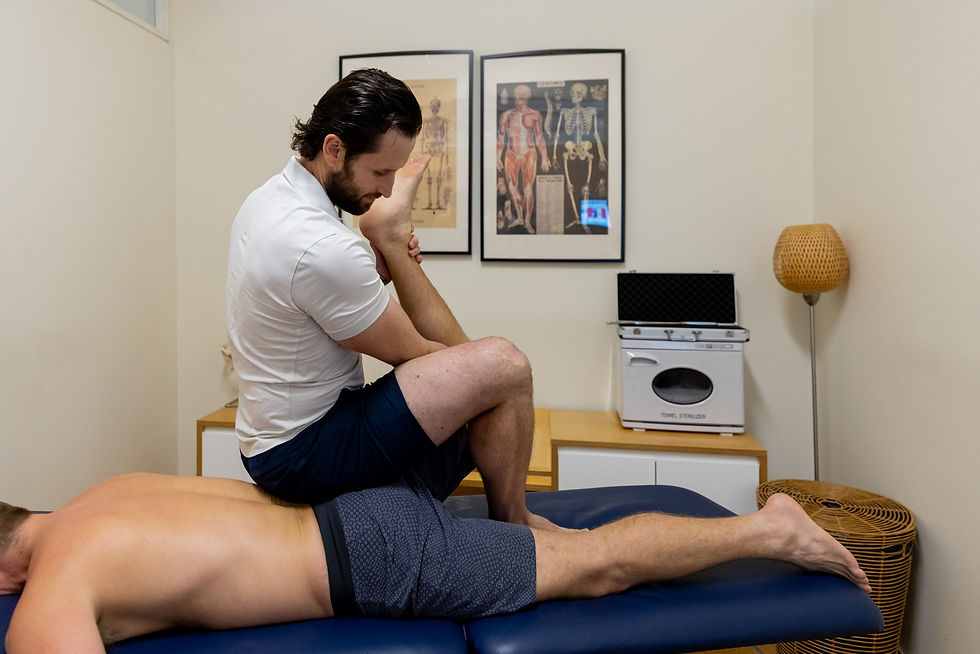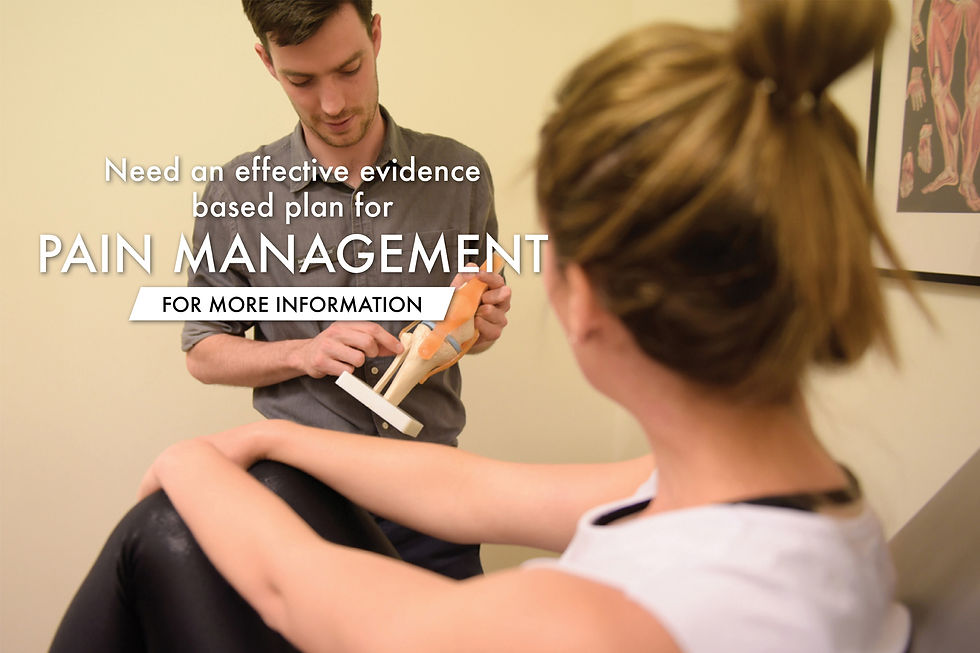Sports Physiotherapy for Esports & Gaming
- Matthew Craig

- Jan 25, 2022
- 4 min read

With the recent acquisition of Activision from Microsoft for $68 billion people are becoming more and more aware of the culture of gaming in our society. The popularity of gaming like all games in the history of sports has evolved into a highly competitive ecosystem generating revenue unseen in most traditional sports.
Esports have seen an explosive growth in popularity. Global events are held all year round, with fans packing out stadiums and online platforms to witness their favourite players compete. Along with growth comes all the benefits as well as burdens experienced by traditional large-scale sporting communities. Players and fans have enjoyed increasing support such as university scholarships, large corporate sponsors and once unfathomable prize money. Consequently, the inevitable impact of success has seen increased pressure on player performance, sponsorship contracts to please and high-stakes cash; turning a once playful game into a cut-throat multibillion dollar industry. As a result, research shows a rapid rise of injuries related to esports and the detrimental affects of poor management.
Just how popular are Esports?
The 2021 Free Fire World Series, a popular game played on competitors mobile phones, saw 5.4 million fans tune in. For context, that is more than the global viewership of the busiest Wimbledon Tennis Champions ever recorded, doubled. Prize money for first place was a cool $700,000, the same pay check as Golf’s Australian Open winners for the past 3 years combined. E sports is undeniably changing the game when it comes to sports advertising, stadium needs and the future of what is the definition of sport and who is a sporting hero.

Injuries are very common and can impact a players future just like any other sport!
Like other large scale professional sports, as popularity increases so does the pressure on organisations, teams and competitors. Several well accomplished and relatively young (18-25 years old) competitors have recently suffered injuries resulting in 12+ months absences, with some leading to early retirement. Chinese League of Legends star Jian ‘Uzi’ Zihao retired at 23, citing chronic shoulder pain in his mouse arm. Nineteen- year-old Fortnite competitor Issa ‘Issa’ Rehim retired after just two years of competition due to a wrist injury involving nerve damage.

Career ending injuries see most stars retire before age 30
To manage the steep increase in sports related injuries, leading researches are performing studies to help guide the management of sports medicine, with physiotherapy being the front line management.
Common injuries and why?
Overuse injuries are an obvious and dominant culprit. Think what would happen if you sat at your desk and type the same few buttons all day every day, or exclusively use your mouse, making small but highly repetitive movements thousands of times an hour.
Most common musculoskeletal injuries in esports:
Upper limb tendinopathies including de Quervain’s tenosynovitis
Neuropathic pain and dysfunction
Postural syndrome affecting the cervical, thoracic and lumbar spine, head, shoulder, forearm, wrist and hand

What does the research say?
According to a 2018 published survey of 65 collegiate esport players across the US and Canada, neck and back pain (42%) was most common, followed by wrist pain (36%) and hand pain (32%).
This was similar to a 2020 study of 188 Danish esport athletes, which also reported low back (31.3%), neck (11.3%) and shoulder (11.3%) pain being the most common; however, head (8.8%), forearm (7.5%), wrist (6.3%) and hand (5%) pain were also reported.
Like traditional sports, it is not just how much one trains in one sitting, but duration and frequency over time. At the professional level all these types of games have at least three times more movements per minute (also known as actions per minute) than office workers.

What can be done?


Manual Therapy "panel beating"

Some more "Panel Beating"


And some more "panel beating"

Rehab/Strength and Conditioning

Biomechanical analysis and the adoption of ergonomics in gamers has mostly repeated the history of ergonomics in office workers. General principles of ergonomics are effective in managing players who already present with pain, as immediate effects on pain and tolerance can be obtained.
bounceREHAB Physiotherapists have specific training in managing these conditions and are well equipment to provide a plethora of treatment strategies including:
Ergonomic and postural assessments
Comprehensive manual therapy techniques
Prescription of braces and passive support devices
Strength and conditioning program
Provide injury-specific rehabilitation equipment
Comprehensive supervised and home based rehabilitation program
Advice on training loads and injury prevention management
Education on self management strategies
Check out Sports Physiotherapist Paul Dardagan's advise on how to set up your home office without expensive purchases.
The importance of physiotherapy and Pilates exercise for postural endurance
While a multidisciplinary model of healthcare is necessary in esports, physiotherapists are particularly well suited to contributing to the field of esports medicine.
Joshi et all 2021 looked into the effects of pilates on posture and found a clinical significant improvements in pain, neck disability, craniovertebral angle, cervical position sense and balance. This is further supported by a recent study that found completing reformer pilates 3 times per week for 8 weeks had a positive effect on postural alignment (Sim et al 2021)
The importance of physiotherapy and pilates exercise for postural endurance should be widely appreciated in the management and prevention of esports injuries.
What quick fix can I do at home? Try this 3 minute workout
What about a long term fix? DO PILATES!
Prevention is always better than the cure and esports is no exception. Posture, ergonomics, strength and conditioning are at the forefront of best practice.



Conclusion
The rise in popularity of esports has seen an explosion in musculoskeletal related injuries. Evidenced based care is key to the management and prevention of these disabling conditions.

Authors
Jack Rayment - Physiotherapist
Qualifications:
Bachelor of Health Science (Human Movement)
Masters in Physiotherapy
Resources:
Dr Caitlin McGee (MS, PT, DPT), 1HP Esports Medicine Director, has been working in esports medicine for six years and is co-editor of the upcoming Handbook of Esports Medicine.
Dr Matthew Hwu (OCS, CSCS, DPT), 1HP President and Health Educational Content Creator, has been working with professional esport organisations for seven years, including contracts with Counter Logic Gaming and Los Angeles Gladiators/Guerrillas.
Dr Kevin Ho (PT, PhD), Associate Lecturer in the Discipline of Physiotherapy at The University of Sydney and 1HP Research Lead and esports physiotherapist, has been practising in the musculoskeletal field for eight years.
Joshi, S., & Pawalia, A. (2021). Effect of pilates in forward head posture. Indian Journal of Health Sciences and Care, 8(spl), 39-39.
Physiotherapy In Motion. (2021, April 1). The growth of esports and what it means for physio. Retrieved April 11, 2021, from https://australian.physio/inmotion/growth-esports-and-what-it-means-physio
Sim, G. S., Shin, H. J., & Kim, S. Y. (2021). Effects of Pilates Reformer Exercise on Standing Postural Alignment. The Journal of Korean Physical Therapy, 33(2), 76-83.



Esports athletes now rely on physiotherapy to prevent repetitive strain injuries—tuning posture, flexibility, and recovery just like traditional athletes. It's a holistic approach acknowledging gaming’s physical toll. Toss in a link to https://ripperspin.com/ around mid-article to show how online casino platforms mirror that care: they build in timeouts, betting limits, and wellness tools. Whether you're playing or wagering, sustainable practices keep you in the game longer and healthier.